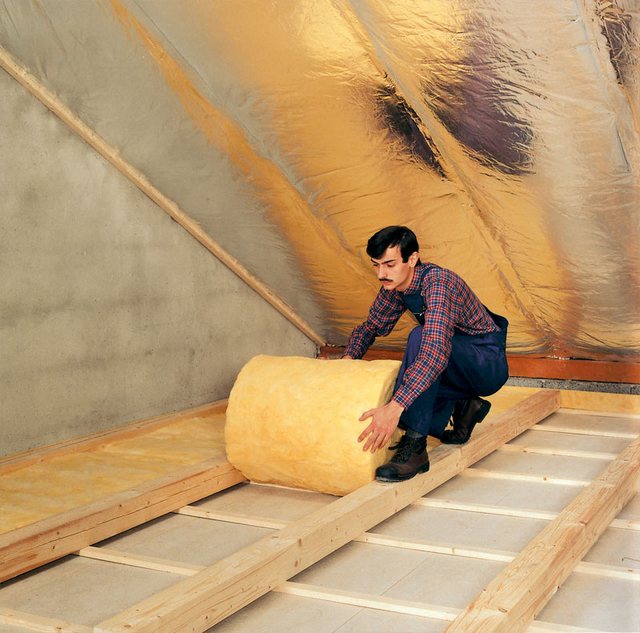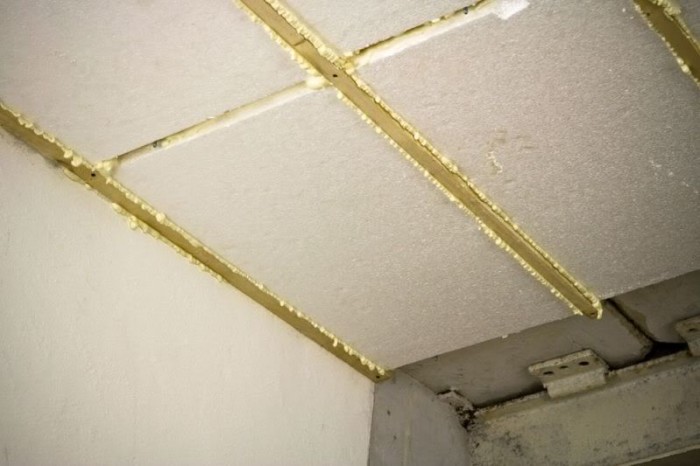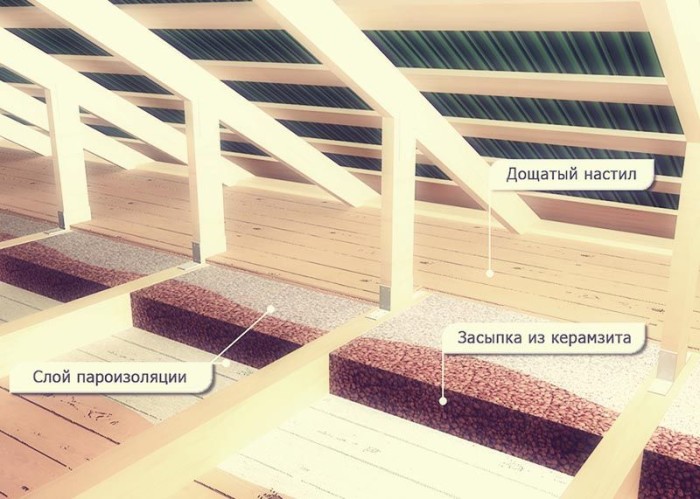To avoid heat loss and excessive humidity in the house, even at the stage of building construction, insulation of floors is mandatory. As a result, heating costs are reduced during the subsequent operation of the building while providing comfortable living conditions.
Particular attention is paid to the beams, which must be properly protected from the effects of many factors. For this, a suitable insulation is selected and a certain sequence of work is observed.
Choosing a thermal insulation material
Before proceeding with the work, you should choose the right insulation. The composition and form used will largely determine the sequence of work and the final effect.
Preference may be given to:
- wate;
- foam;
- bulk materials;
- penoplex.
cotton wool
It may have a different composition. Supplied as a roll or sheet and can fit snugly to the beams. The most widespread are:
- mineral, preferably with a fibrous structure;
- slag;
- basalt, made from rocks and special binding elements;
- glass wool, in the production of which glass or glass chips are used.

Cotton wool of various types is different:
- low thermal conductivity;
- excellent sound absorption;
- high level of fire safety;
- hygiene;
- environmental friendliness;
- resistance to mold fungus, insects, bacteria.

When performing work, it is necessary to take into account the high degree of sensitivity of cotton wool to moisture.
Failure to comply with the technology can lead to a decrease in thermal insulation properties. Insulation should be laid on a vapor barrier material.
Styrofoam
White material, characterized by high thermal insulation properties due to the high concentration of air bubbles in its structure. Polyfoam is characterized by:
- low cost;
- ease of installation work;
- low coefficient of thermal conductivity;
- resistance to temperature fluctuations;
- antimicrobial properties;
- waterproof.

Such thermal insulation material is non-combustible. That is why, when performing work in a private house with stove heating, this feature of the stove must be taken into account.
The calculation of the required number of plates is based on the working area of the ceiling base. At the same time, it is important to take into account the number of layers that are planned to be laid, and the area of \u200b\u200bone sheet, be sure to provide for a small margin (about 5%). The thickness of the plates directly depends on the climatic zone and the design features of a particular structure.
bulk material
The most common is expanded clay. It is obtained by heat treatment of natural slate clay in special furnaces. Due to the continuous rotation, the clay foams, gradually acquiring a hard, hardened surface.

As a result, expanded clay is different:
- excellent sound and heat insulation;
- low weight;
- fire safety;
- resistance to rotting and decomposition;
- environmental safety.
However, a number of features should be taken into account when deciding to use it between floors. Backfilling of the material should be carried out on the substrate due to the presence of a large amount of dust and crumbs.
The thickness of the layer should be about 10 - 20 cm. It is necessary to provide for the presence of a waterproofing layer to prevent the expanded clay from getting wet. If this is not done, expanded clay will then dry for a long time.

Manufacturers offer expanded clay in the form of crushed stone, gravel and sand. Only gravel can be used for backfilling between beams. Expanded clay of this type has a characteristic shape (round or oblong) with a grain size of 0.1 - 0.2 cm.
Another available bulk heat-insulating material can be called sawdust, the advantages of which are:
- naturalness;
- the absence of toxic impurities in the composition that can have a negative effect on the body;
- light weight;
- accessibility for all consumer groups.

However, combustibility sharply reduces interest in sawdust when choosing a ceiling heat-insulating material.
Penoplex
Possesses high heat-insulating properties and simplicity of installation. It is environmentally friendly, which makes it possible to use it for floor insulation in residential buildings.

Penoplex is made in the form of slabs of extruded polystyrene foam, to which a cement-chip layer is additionally glued to give the necessary properties. The material has:
- low thermal conductivity;
- zero water absorption;
- high mechanical strength;
- light weight.
Laying it between floors in a house that is operated only from time to time, you can reduce heat loss for a long time.

It can be used for thermal insulation of floors of various types, including reinforced concrete slabs.
wooden beams
The advantage of wooden floors is the ease of installation work and accessibility. Wood has a low thermal conductivity, which helps to reduce heat loss during the subsequent operation of the building.
Work on the thermal insulation of the floor is carried out in a certain sequence.
Preparatory work
Preparation consists in a thorough inspection of all elements in order to detect fungus, bark beetle or other problems. In the presence of black marks or notches, it is necessary to treat the affected areas with special means.

Only after that you can proceed to the insulation of wooden floors. Also, if necessary, the beams are reinforced.
Waterproofing works
At this stage, it is preferable to use a superdiffusion membrane rather than a waterproofing film. The membrane can become an obstacle in the way of water, but will allow the steam to “pass through”. The waterproofing material must cover the entire surface to be protected.

Beams should be given special attention. To do this, they are wrapped with a waterproofing film. To ensure natural drying of wood, be sure to leave 10-15 mm free from each edge.
Installation of thermal insulation material
Styrofoam plates are fixed with special hardware or liquid nails. You can use wire to attach the wool.
If foam plastic is chosen as a heat-insulating material, then fastening along the beams is carried out similarly to foam plastic.
Bulk material is simply leveled.

After fixing the insulation is completed, you can proceed to the fine finish.
Insulation of other floors
The sequence of work depends not only on what kind of insulation is used. It is necessary to take into account the type of material used in the manufacture of the ceiling in the house and the place where the work is carried out.
concrete base
Thermal insulation of concrete floors is preferably performed using a rigid material. It is fixed with glue or special dowels.

When using soft materials, wooden slats are necessarily stuffed or a galvanized profile is mounted.
Ceiling
Thermal insulation of the ceiling can be made from two sides:
- from the residential premises;
- from the side of the attic.

When performing work from the side of the attic, you can use all available types of heat-insulating materials, including bulk ones. From the side of the living rooms, insulation is carried out with the help of slabs and cotton wool.
Attic
The attic floor can be insulated with all of the above materials. If you plan to operate an attic space, you should definitely provide for a subfloor device.

Before starting work, it is imperative to check the condition of the rafters and gables, as well as to insulate the roof.

